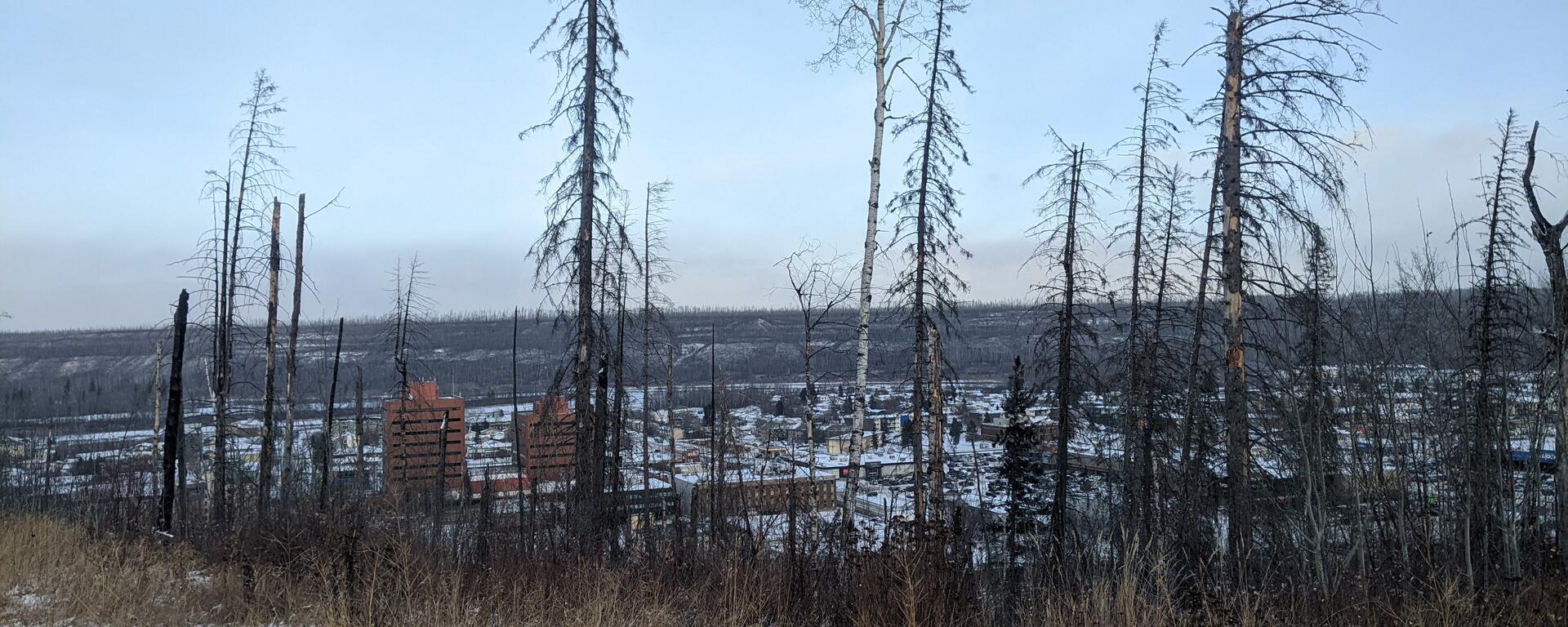In a 2019 interview, Alexis Foster, former Executive Director of the Fort McMurray Chamber of Commerce, bluntly stated “the biggest problem in Fort McMurray is our national reputation…The [oil sands and pipeline] debate has been huge and centred on Wood Buffalo as if it’s somehow our pipeline. But the rest of the country doesn’t realize that this is their issue too. [Canadians] need to ask: what’s our story here?”
Foster’s frustration underlines that the residents of Wood Buffalo feel as if they do not have the ability to express their own (often very complicated) relationship to Canadian energy and other Canadians. Residents often feel they are reduced to simplistic stereotypes and narratives.
In Storying the Oil Sands: Community, Innovation and Politics in Northern Alberta, we want to prioritize the many, rich and diverse voices across the region and help bring nuance and care to a national conversation about energy that leaves Wood Buffalo voices to the side. We ask:
- How do the residents of Wood Buffalo Municipality understand their community, energy industry, and their relationship to Canada?
- What stories are excluded from depictions of northern Alberta?
- What do the stories from Wood Buffalo communities tell us about our energy pasts, presents and futures?
- What is the best way to represent the stories of Wood Buffalo communities to a national audience?
This project is a long-term (5-10 year) project that proposes to collect a significant number of oral histories (500 - 1000) in the region, and also explore different ways to represent community history in the oil sands, specifically through the usage of augmented reality (AR) experiences, digital heritage technologies (3D laser scanning, 3D printing etc), and novel digital storytelling practices (including community-based photography and videography). This large-scale project will foreground community, industry, and museum researchers and partnerships, and includes a major youth capacity-building component (especially in the area of digital heritage).
Below, we describe some of the projects that are part of Storying the Oil Sands.
When visiting northern Alberta, we were consistently confronted by the fact that our outsider understanding of Wood Buffalo as a deeply masculine environment, dominated by male-identified energy workers, contrasted with a very different reality on the ground.
Here are some excerpts from recent interviews:
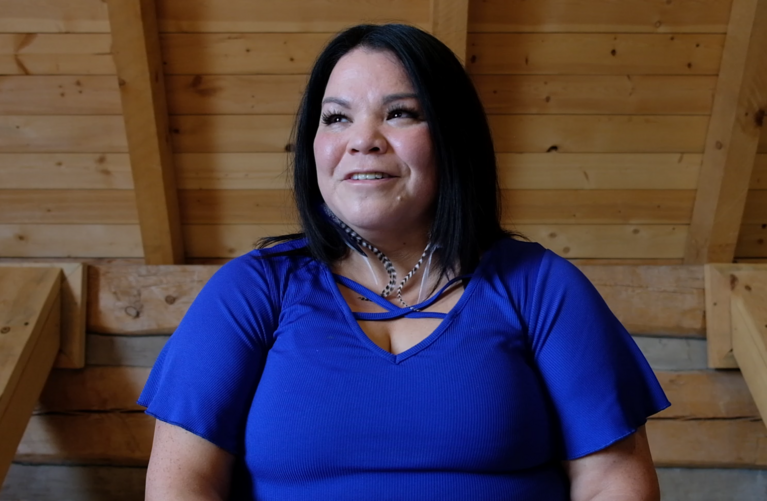
I think [Indigenous women], we're rising up right now...That's the beautiful thing about here.
Ginger Auger
I'll let you in on a secret...women are really running Fort McMurray. It's just no one knows it because they're just quietly doing it.
Therese Greenwood
What is it like arriving in Fort McMurray for the first time?
Funmi Baiyewun describes how she first heard about Fort McMurray, and her first impressions when visiting the town.
Many of our interviewees, who identified as women, wanted their life stories, their experiences to be heard. They noted that it's not just a national audience who is not hearing their stories, but also a younger generation in their own communities.
Women of Wood Buffalo is a project that aims to reveal, understand, celebrate and share the incredible experiences, strengths, hardships, struggles and successes of women in the region. Most of all, our project connects Indigenous, settler, and newcomer women's experiences to show the critical role they play in building and sustaining lives and communities.
Keep an eye on this page as we begin sharing the results of our project and the stories of the women of Wood Buffalo!
The presence of the oil industry in Wood Buffalo has significantly impacted the type, duration and style of labour that people engage in. In particular, the scale of oil sands mining has redefined the way that people think of machines, technologies and even themselves. The usage of incredibly large machinery - along with its concomitant risks - has also spawned an immense set of constantly changing safety regulations, ideas about masculine labour and identity, along with a specific corporate culture of mining safety.
I am Cyrus is project inspired by "Cyrus," the Becyrus Erie bucketwheel excavator situated on the premises of the Oil Sands Discovery Centre.
When we were preparing a 3D digital scan of this artefact, we discovered a whole series of worker names welded into the assembly.
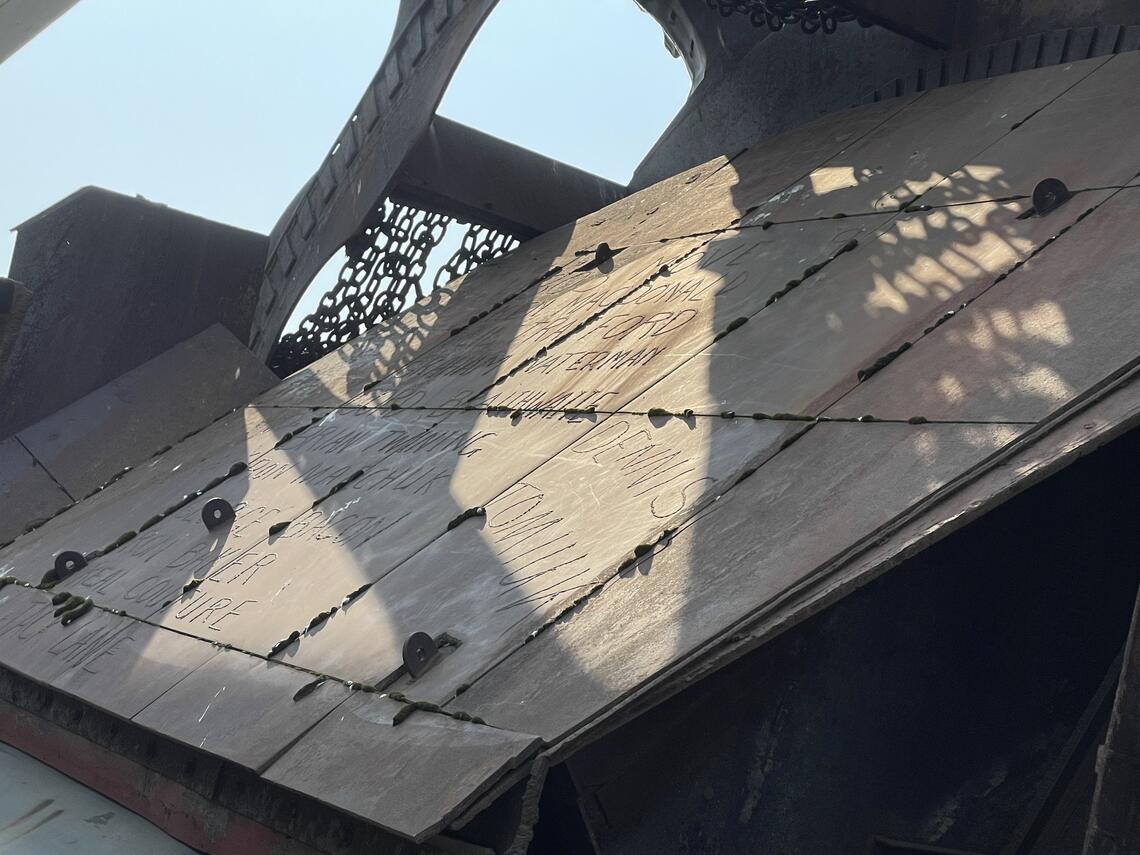
The signatures on Cyrus, the bucketwheel excavator, reminded us that we grow our own familiarities and intimacies with machines over time. To learn how to operate a Becyrus Erie bucketwheel requires time, energy and repetition. Some workers operate the same machine for years. They often acquire details about the machine's operation that cannot be learned solely through training but practice. Sometimes, people grow a fondness for certain machines over others.
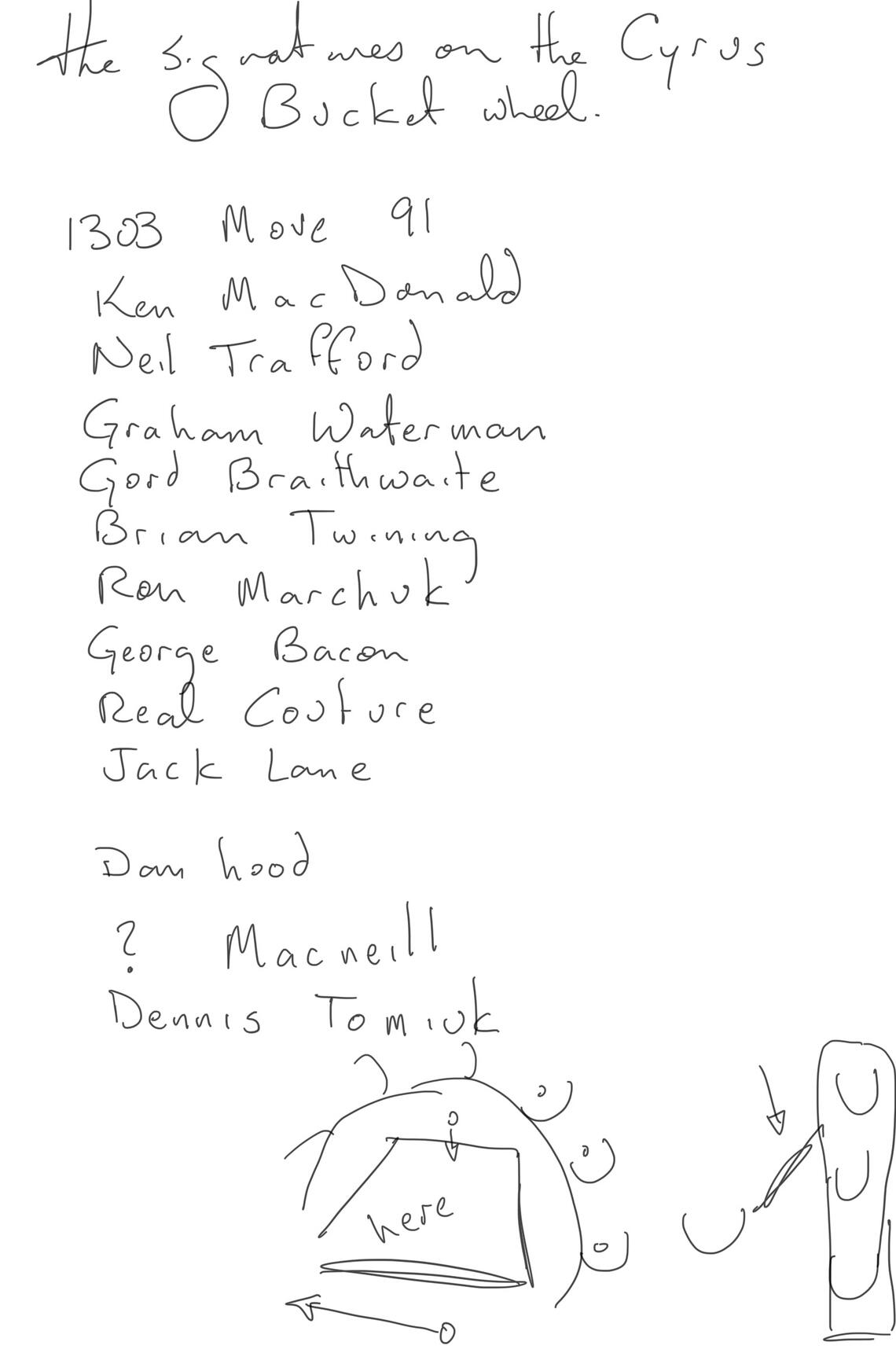
I am Cyrus is a project that brings together oral histories of oil sands machine operators with 3D digital artefacts of the machines themselves to understand the transformative nature of human-technological relationships. Through the oral histories, we hope to better understand how workers got involved with certain forms of labour, how they were trained to operate large oil sands machinery, and how they were impacted by (sometimes) a lifetime of operating large machinery.
Keep an eye out on this page for more updates about this project!
This is currently a project in development with community researchers and with faculty and students at Keyano College.
Abasand is a neighbourhood with a layered history in Fort McMurray. It is situated on a hill, surrounded by water on three sides: the Athabasca, Horse and Hangingstone rivers.
Long before there was a suburban subdivision named Abasand, Metis people ran their traplines through the area, especially the Horse river valley. The area saw an influx of its first settler residents when Max Ball started building the Abasand Oil Plant next to the Horse river in 1933. The neighbourhood - Abasand - got its name from the oil plant, which was a shortening of the phrase "Athabasca [oil] Sands".
The neighbourhood is also well known for its history of fire - the Abasand OIl Plant itself burned down twice in the 1940s before it was permanently shut down in 1945. Most of the ruins of the plant were further destroyed in the 2016 fire.
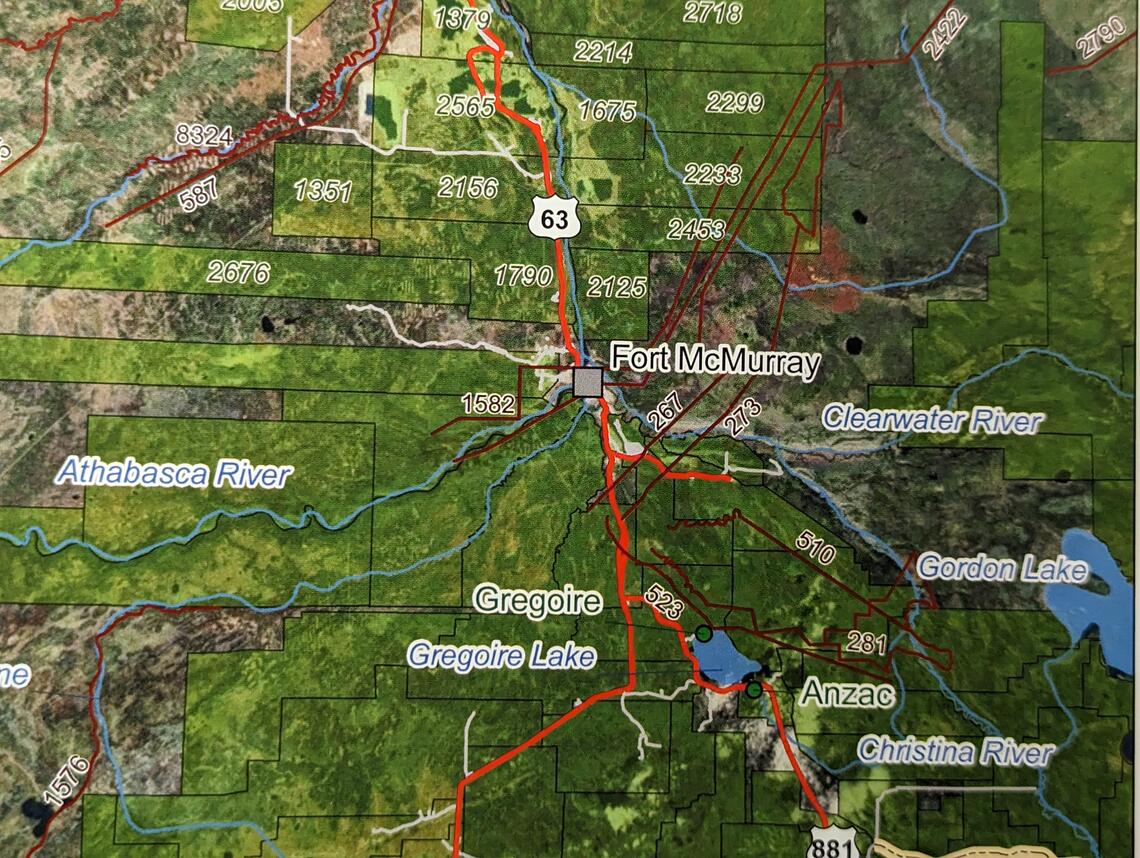
Metis traplines in McMurray area, 1957.
From: Mark of the Métis: Traditional Knowledge and Stories of the Métis Peoples of Northeastern Alberta
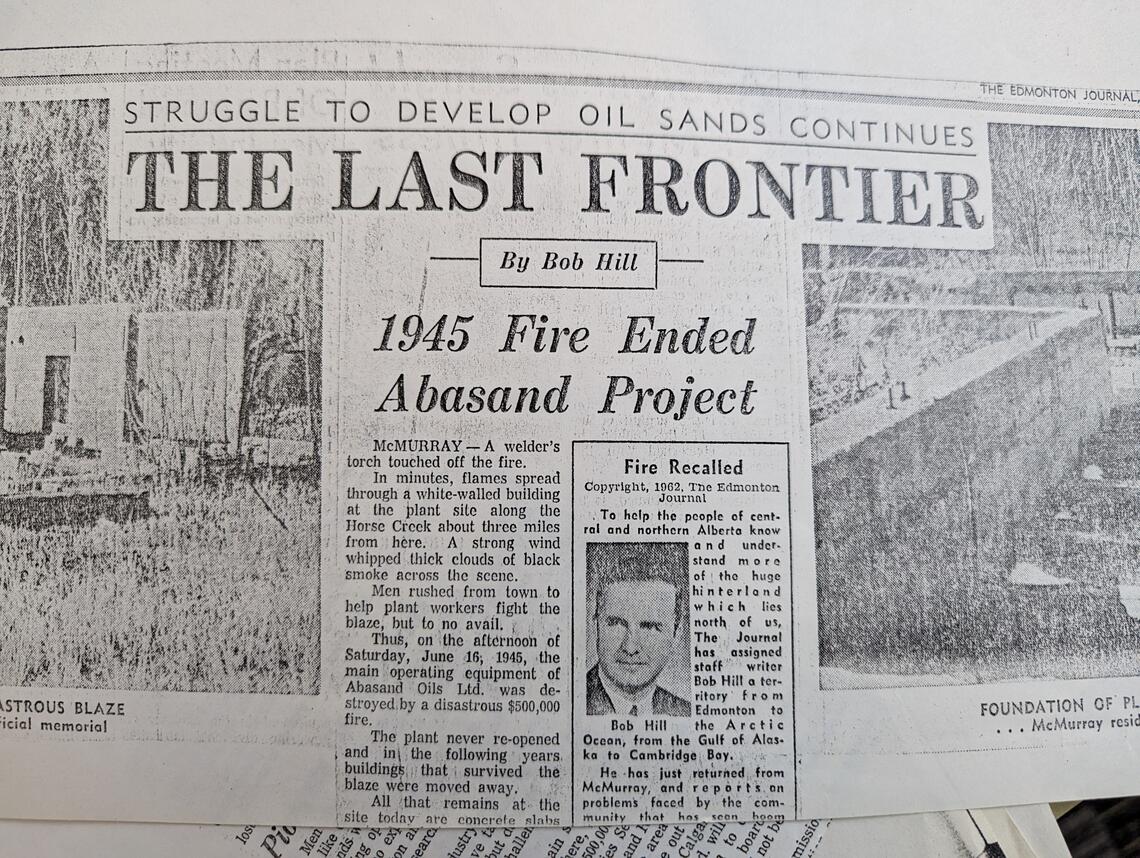
Story about Abasand Oil Plant fire in Edmonton Journal (5/3/62)
UAlberta Archives. Darlene Comfort Fonds. 84-25, Item 60, Box 3.
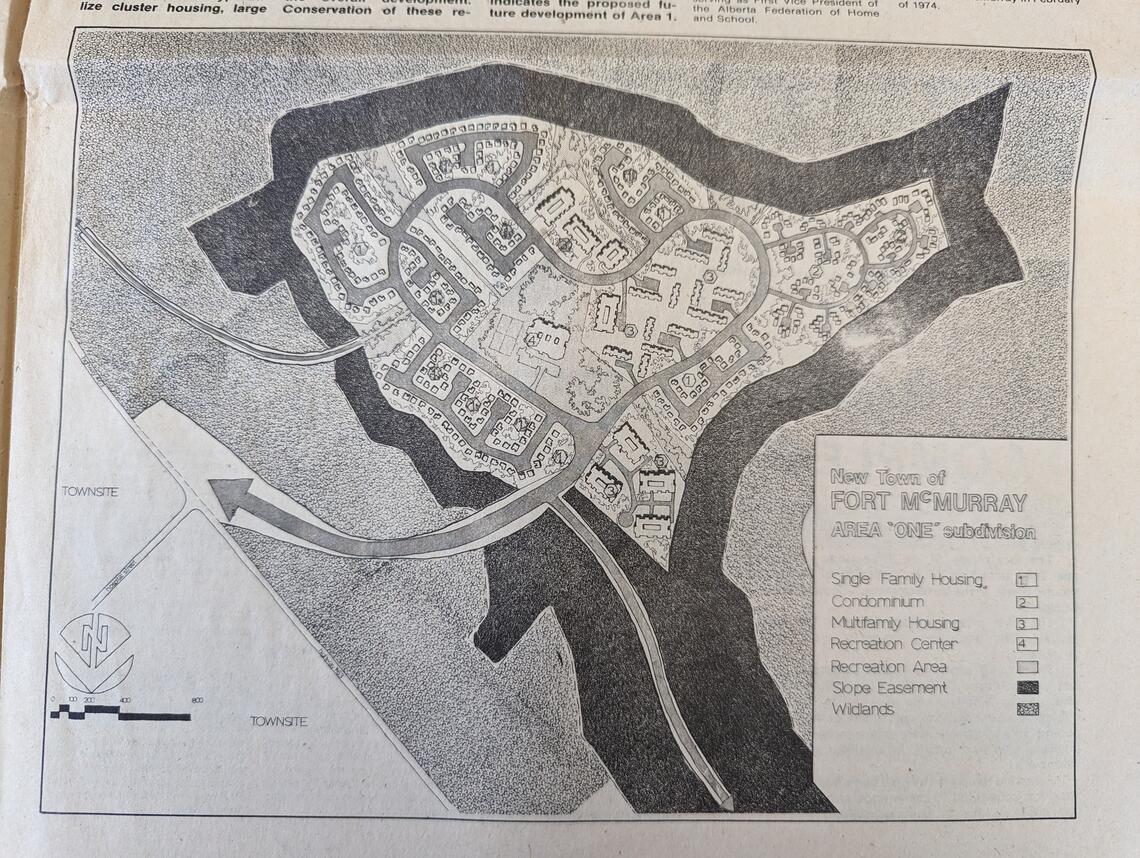
Early plans or the first part of the new Abasand subdivision, McMurray Courier, September 11, 1974.
UAlberta Archives. Darlene Comfort Fonds. 84-25. Item 35, Box 2.
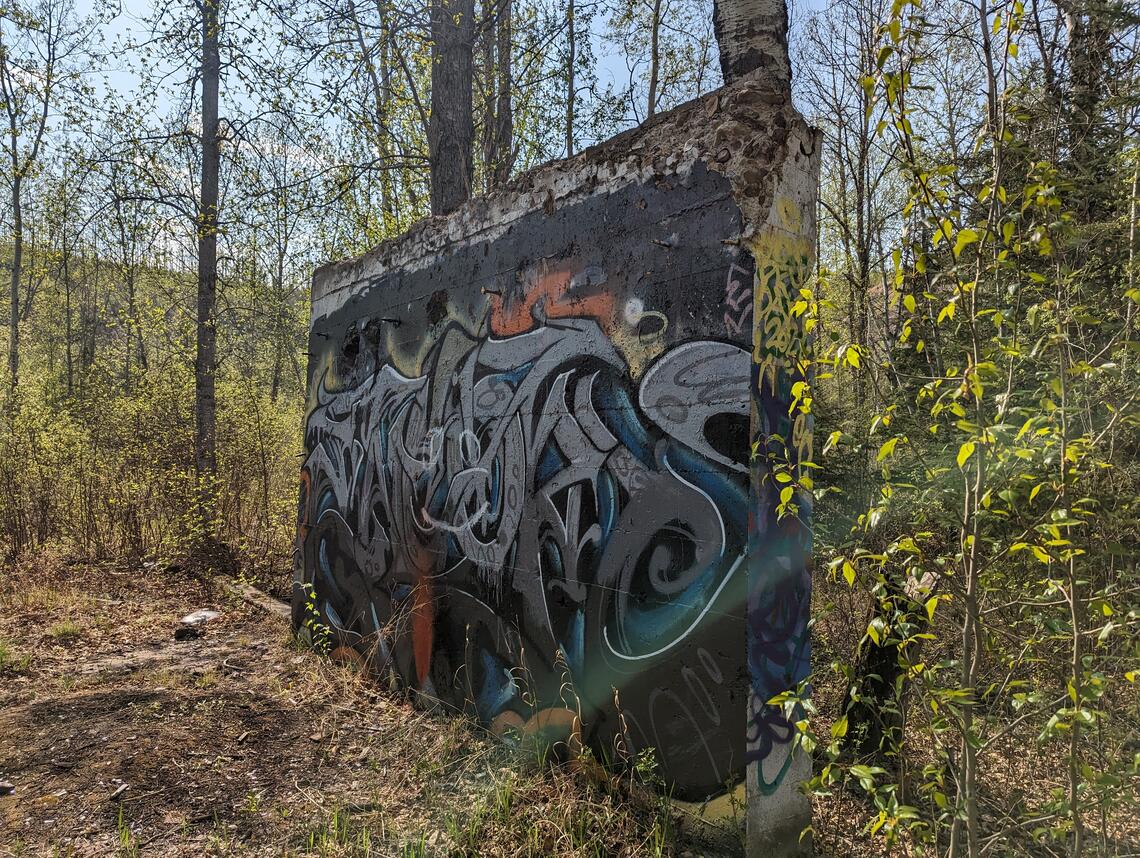
The remains of the Abasand Oil Plant, May 2023.
Sabrina Perić
Stories and Lives of Abasand is intended to be a community-based history and ethnography that attempts to weave together the important Indigenous, settler colonial, industrial and natural histories of the area. It will include community-created artwork, archival and oral history research, as well as a series of research creation projects centered on and around the area embraced by three rivers.
Keep an eye on this page for more updates!!!

